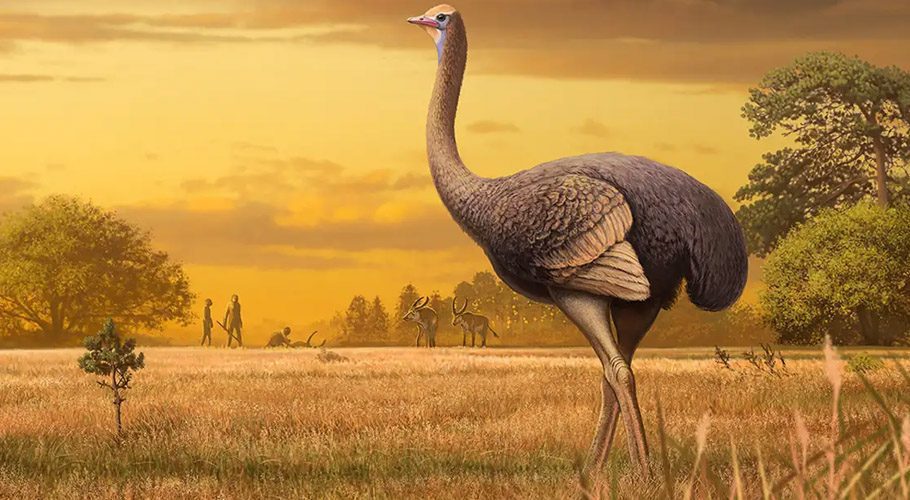Enormous birds-massive birds-inhabited Australia fifty thousand years ago. One of them, called mihirunga, or “thunder bird,” was six times the size of a contemporary emu, weighing up to 250 kilograms and standing over 2 meters tall.
According to Trevor Worthy, a paleozoologist at Flinders University, a fresh examination of old eggshells-the remains of a prehistoric feast-suggests “humans were responsible.”
About 55,000 years ago, humans arrived in Australia; by 45,000 years ago, the Genyornis bird and hundreds of other giant creatures like marsupial lions and huge kangaroos had become extinct. However, the evidence linking their demise to the introduction of humans was at best speculative. Although evidence of hunting and butchering huge creatures was left in North America-bones with cutmarks, for example, or stone projectile points buried in mammoth remains-none of this was found in Australia.
Researchers connected charred eggshells in Australia’s southern and western shores to Genyornis in 2016, providing a probable smoking gun. They claimed that the shells proved omelet production on a big enough scale to put the thunder bird over the edge. Gifford Miller, a geoscientist at the University of Colorado, Boulder, and a co-author of the article says, “A lot [of shells] had been burnt, which suggests human use.” “That would have been the first concrete proof of predation.”
Others, however, said the shell fragments were too tiny and thin to be Genyornis and instead thought they belonged to Megapodius, a smaller bird species distantly related to chickens and turkeys. “We needed some independent means to establish the shells belonged to a gigantic bird,” Miller says of the eggs, which are around the size of an emu or small ostrich egg.




































